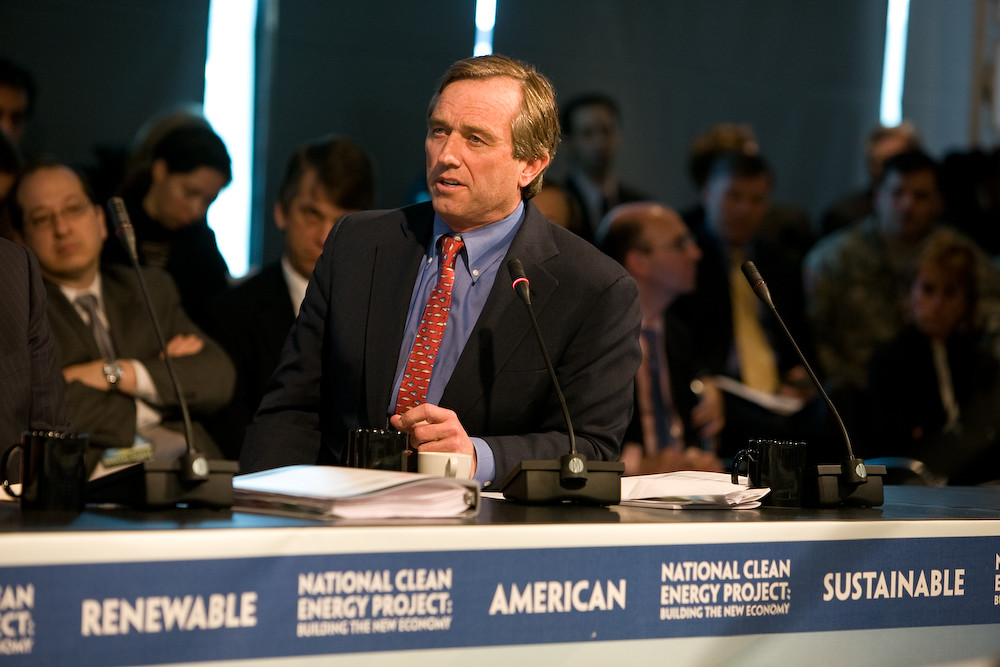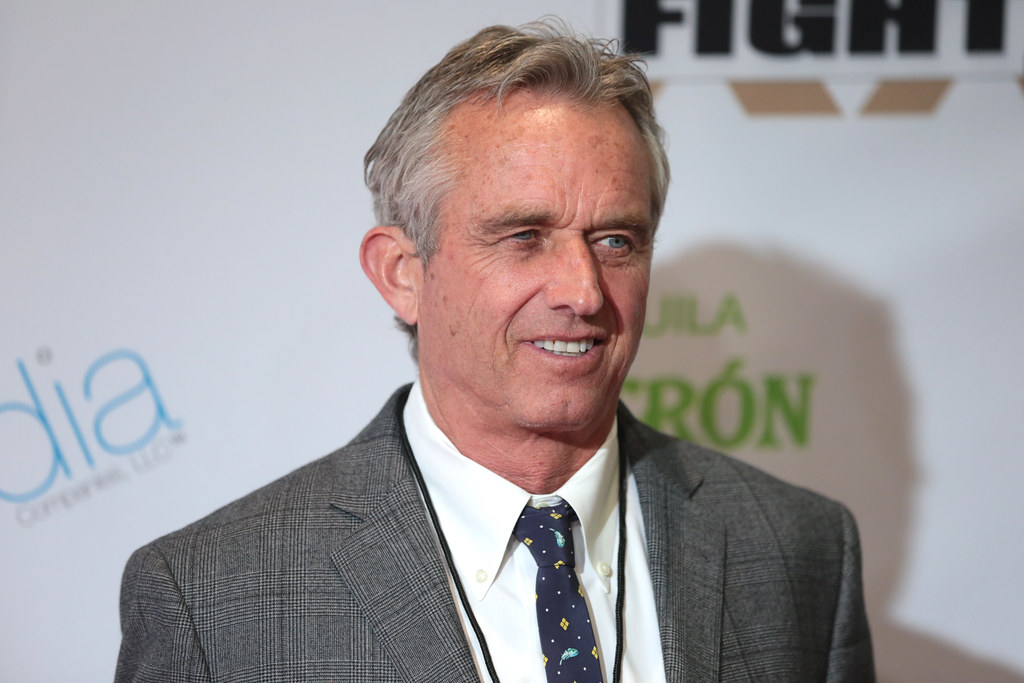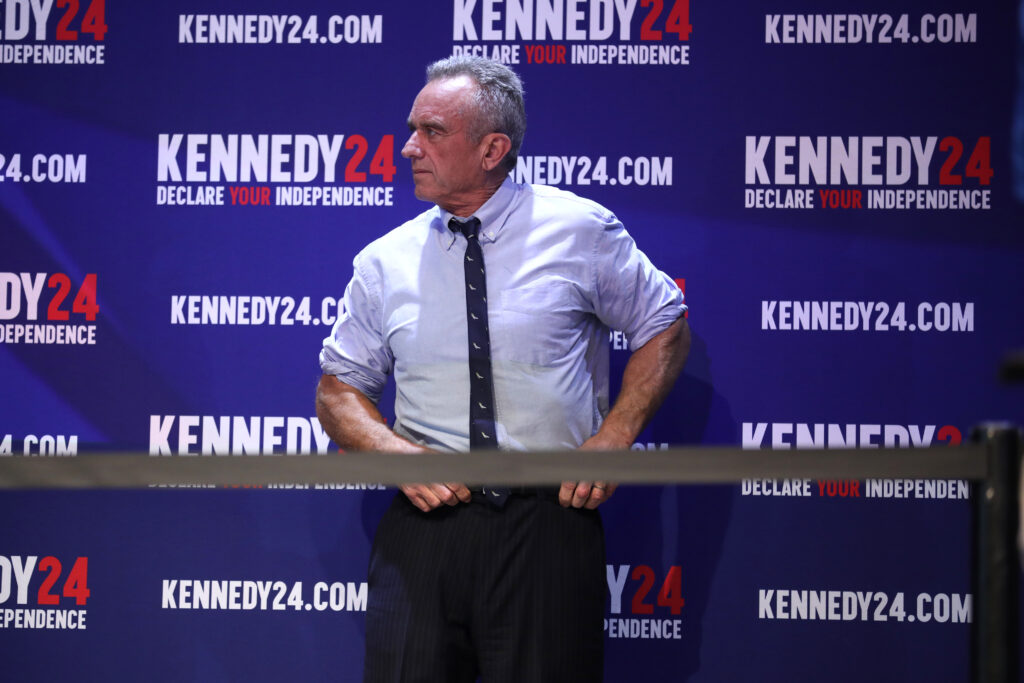
In an era marked by escalating concerns over public health and dietary patterns, Robert F. Kennedy Jr., now serving as Health and Human Services Secretary, has launched an ambitious and highly scrutinized campaign targeting ultra-processed foods. His efforts, championed under the slogan “Make America Healthy Again,” seek to fundamentally reorient the American diet away from these industrially manufactured products, which he and his supporters blame for contributing significantly to chronic diseases across the nation. This initiative represents a substantial pivot in national health discourse, bringing a complex and often overlooked aspect of modern food consumption to the forefront of policy debate.
Yet, this seemingly straightforward mission is fraught with complexities, from the challenge of establishing a universal definition for what constitutes “ultra-processed” to navigating the deeply ingrained dietary habits of Americans. The campaign sparks essential questions about the impact on individual consumers, the powerful food industry, and the very fabric of federal health policy. Understanding the nuances of this movement, its scientific underpinnings, and the considerable hurdles it faces is crucial for anyone seeking to comprehend the future trajectory of America’s dietary landscape.
This in-depth examination will explore the multifaceted nature of ultra-processed foods, the scientific consensus (or lack thereof) surrounding them, and the ambitious proposals set forth by Secretary Kennedy. It is a conversation that demands rigorous examination, balancing public health imperatives with economic realities and the diverse perspectives of nutrition experts, policymakers, and consumers alike. As the debate unfolds, the potential ramifications for our plates and our health are profound, promising a significant recalibration of how America eats.

1. **The Rising Scrutiny on Ultra-Processed Foods and Public Health**Ultra-processed foods, or UPFs, are increasingly under the microscope, drawing intense scrutiny from health officials and advocates alike. At the heart of this growing concern is Secretary Robert F. Kennedy Jr., who, along with his supporters, contends that these pervasive and often palatable snacks are significant drivers of the chronic disease epidemic plaguing the United States.
This mounting attention underscores a critical juncture in public health, where the convenience and widespread availability of modern food products are being directly linked to long-term health outcomes. The dialogue around UPFs has thus moved beyond academic circles, becoming a central political priority under the “Make America Healthy Again” commission.
The swift elevation of this issue to a national political priority has been noted by experts. Jerold Mande, an adjunct professor of nutrition at Harvard T.H. Chan School of Public Health, described it as “extraordinary” how quickly the MAHA commission has “made chronic disease, specifically big food,” a political priority. This rapid mainstreaming highlights the perceived urgency of addressing these dietary components within a broader health strategy.
Read more about: From Camelot’s Kitchen to Your Table: Unraveling JFK’s Favorite Waffles and the Modern Food Revolution

2. **The Elusive Quest for a Universal Definition of Ultra-Processed Foods**Despite the increasing focus, one of the most significant challenges in tackling ultra-processed foods is the lack of a universally agreed-upon definition. While many recognize products like ice creams, chips, and sodas as ultra-processed, the category also encompasses a surprising array of foods that can, in moderation, be part of a healthy diet, such as tofu, some canned fruits and vegetables, protein bars, cereals, and nut milks.
This ambiguity complicates both consumer understanding and policy formulation. As Michele Polacsek, professor of public health at the University of New England and an expert on promoting healthy food choices, observes, “These are all quite processed and some of them can be classified as ultra-processed foods but because of their nutrient profiles, they might be better for us and not associated with the worst health outcomes.” This highlights the critical nuance required in any broad classification or regulatory approach.
The U.S. Department of Health and Human Services has acknowledged this definitional void, announcing in a July 23 statement that the administration is actively seeking information and data to help develop an official definition for ultra-processed foods. This crucial first step aims to bring clarity to a complex category, which is essential for effective public health messaging and potential policy decisions.

3. **Understanding the Core Nature of Ultra-Processed Foods: Manufactured Ingredients and Additives**
At their fundamental core, ultra-processed foods are distinguished by their manufacturing process and the types of ingredients they contain. These are not simply foods that have undergone basic processing like freezing, grinding, or pasteurization. Instead, ultra-processed foods are created by food companies using manufactured ingredients, rather than actual whole foods.
A quick glance at the ingredient list of many packaged products often reveals a roster of unfamiliar components. These are frequently the ultra-processed ingredients, as nutrition expert Marion Nestle, an emeritus professor at New York University, explains. They are employed to make food “taste better, look better and last longer on the shelf.” This industrial design distinguishes them from minimally processed foods.
Foods created through industrial processes, incorporating ingredients such as additives, artificial colors, and synthetic preservatives that would be impossible to replicate in a home kitchen, are typically considered the most processed. This distinction is key to understanding the concerns surrounding their impact on health and nutrition, as it points to a departure from traditional food preparation and natural food matrices.

4. **The Alarming Health Conditions Linked to Ultra-Processed Foods**The growing body of scientific evidence increasingly links the consumption of ultra-processed foods to a broad spectrum of adverse health conditions. Research indicates that UPFs tend to replace healthier, whole foods in the diet and contribute to higher caloric intake, a combination that has significant public health ramifications.
A 2024 study published in the British Medical Journal brought these concerns into sharp focus, linking ultra-processed foods to approximately 30 different health conditions. These include widespread ailments such as obesity, type 2 diabetes, and heart disease, all of which represent major public health challenges in the United States.
The implications extend beyond physical health, with the study also identifying connections to certain cancers and mental health disorders. This broad impact underscores why health authorities and advocates like RFK Jr. are increasingly alarmed by the prevalence of these foods in the modern diet, viewing them as a critical factor in the nation’s declining health metrics.
Read more about: 14 Science-Backed Ways to Boost Your Mental Well-being: A Healthline Guide

5. **RFK Jr.’s “Make America Healthy Again” Commission: A Bold Stance**Robert F. Kennedy Jr.’s commitment to confronting the issue of ultra-processed foods is powerfully articulated through his “Make America Healthy Again” (MAHA) commission. In May, this commission released a comprehensive 69-page report specifically targeting ultra-processed foods as a major contributor to the chronic disease epidemic.
The report outlined a clear vision for dietary reform, advocating for the integration of whole foods “at the center of healthcare.” It also called for a significant boost in nutrition research, emphasizing the importance of independent studies and actively working to minimize the influence of the food industry over such crucial research efforts.
Jerold Mande, adjunct professor of nutrition at Harvard T.H. Chan School of Public Health, welcomed the commission’s stance, stating it was “extraordinary” how quickly the MAHA commission has “made chronic disease, specifically big food,” a political priority. He expressed a sense of refreshment in seeing an administration so clearly identify the industry as a root cause of sickness and death, signaling a potential shift in official policy.

6. **The Paradox of Mom’s Meals: A Case Study in Contradiction**A compelling illustration of the complexities and contradictions inherent in the battle against ultra-processed foods emerged with Secretary Kennedy’s praise for Mom’s Meals. Kennedy publicly lauded the company, which delivers $7-a-pop meals to Medicaid and Medicare enrollees, thanking them for sending taxpayer-funded meals “without additives” to sick or elderly Americans, and calling it “really one of the solutions for making our country healthy again.”
However, an Associated Press review of Mom’s Meals’ menu, including its ingredients and nutrition labels, revealed a stark contrast to Kennedy’s stated mission. The company’s offerings, despite his praise, were found to be typical heat-and-eat, ultra-processed foods, precisely the kind Kennedy routinely criticizes for contributing to illness. Marion Nestle, a nutritionist and food policy expert at New York University, who reviewed the menu for the AP, noted that the meals contained chemical additives impossible to recreate in a home kitchen.
Nestle further highlighted that while Mom’s Meals avoided artificial petroleum dyes that Kennedy had specifically pressured companies to remove, the underlying issue of ultra-processing additives persisted. She stated, “It is perfectly possible to make meals like this with real foods and no ultra-processing additives, but every one of the meals I looked at is loaded with such additives.” This incident underscores the nuanced and often challenging reality of identifying and addressing ultra-processed foods within existing healthcare and food provision systems, even for those dedicated to reform.

7. **Navigating the Nuance: When Some Processed Foods Can Be Part of a Healthy Diet**While the campaign against ultra-processed foods gains momentum, it is crucial to recognize that not all processed foods are created equal, and some can indeed play a role in a healthy diet. The conversation often requires a more nuanced understanding, as experts caution against a blanket condemnation of all items that have undergone some form of processing.
Michele Polacsek emphasizes this distinction, stating, “We don’t have all the evidence we need. We need a lot more research on this.” She notes that “not all UPFs are the same,” and without more data, it is difficult to determine which specific ingredients or processes in packaged foods lead to negative health outcomes. This perspective suggests that a balanced approach, informed by further scientific inquiry, is essential.
Marion Nestle advises consumers to minimize their intake of ultra-processed foods generally, but she also reminds them that some processed items contain valuable nutrients that can be incorporated into a balanced diet. This echoes the sentiment that while the most industrially altered foods are concerning, simple processing often enhances safety, convenience, and nutritional access.
Illustrating this complexity, a 2023 study led by researchers at the U.S. Department of Agriculture demonstrated that it was theoretically possible to construct a healthy diet where 91% of calories came from ultra-processed foods. However, the authors also cautioned that this specific diet was notably high in sodium and lacked sufficient whole grains, indicating that such a high reliance on processed foods, even carefully selected ones, still presents challenges. Ultimately, Nestle reiterates, “The basic principle of healthy eating is variety. If you eat a lot of different kinds of food, and most of them are minimally processed, you’re doing fine.” It is a reminder that enjoyment of what we eat remains important within a framework of conscious choices, as “Food is one of life’s greatest pleasures, it’s really important to enjoy what you eat.”

8. **The Pervasive Presence of Ultra-Processed Foods in the American Diet**Despite growing awareness and calls for healthier eating, ultra-processed foods maintain an overwhelming presence in the American diet. Research consistently shows that these industrially manufactured products constitute a staggering proportion of the calories consumed by U.S. citizens. Depending on the study, estimates range from approximately 60% to over 70% of the U.S. diet being derived from ultra-processed foods, a figure that climbs even higher—to about two-thirds—for children and teenagers.
This widespread consumption poses immense challenges for public health initiatives. Nutrition expert Marion Nestle points out that changing these ingrained dietary habits would be “impossible because of the way that Americans eat.” The convenience, affordability, and palatability engineered into these foods make them a staple for many, often replacing whole, minimally processed options. This deep integration into daily life means that any campaign aiming for significant dietary change must contend with powerful societal norms and consumer expectations.
The sheer volume of ultra-processed foods in the U.S. food supply underscores the urgency behind Secretary Kennedy’s “Make America Healthy Again” commission. When such a dominant portion of a nation’s caloric intake is linked to chronic diseases, as indicated by numerous studies, the problem transcends individual choices to become a systemic public health crisis. Addressing this requires not only raising awareness but also understanding the complex web of factors that perpetuate this reliance on industrially altered foods.

9. **Proposed Regulatory Reforms: Targeting Additives and Dyes**Secretary Kennedy’s campaign includes a focus on specific regulatory reforms designed to curb the use of certain ingredients in ultra-processed foods. As head of the MAHA commission, Kennedy has articulated plans to introduce measures such as phasing out synthetic food dyes and closing a loophole that allows for untested food additives to enter the market. These proposed reforms aim to address components of UPFs that are widely seen as problematic and distinct from naturally occurring food elements.
One prominent target of Kennedy’s efforts is the removal of specific food dyes, including Red No. 3. This particular additive has drawn scrutiny, with California having already banned it due to concerns about carcinogens. Experts like Dr. Peter Lurie, executive director for the Center for Science in the Public Interest, support Kennedy’s aim to remove such dyes, noting that several should be blocked by the U.S. government. These efforts reflect a broader concern that the U.S. allows thousands of additives that are banned in other countries, particularly in the European Union, a comparison that FDA representatives say requires a deeper understanding of differing regulatory methodologies.
The push for regulatory change extends beyond dyes to the larger issue of food additives. Kennedy has also pressured companies to remove artificial petroleum dyes, highlighting a desire for greater alignment with international food safety standards and a reduction in ingredients that are chemically foreign to traditional food preparation. Such reforms, if enacted, would represent a significant shift in how the food industry operates and what ingredients are permitted in products widely available to American consumers.

10. **Historical Precedents: The Enduring Challenges of U.S. Dietary Campaigns**Efforts to shape America’s dietary patterns through public health campaigns are far from a new phenomenon; they have a long and often challenging history. Prior initiatives, such as former First Lady Michelle Obama’s “Let’s Move” initiative, aimed at addressing childhood obesity by promoting non-processed fruits, vegetables, and water. These modern campaigns build upon more than a century of dietary guidance that initially focused on food groups, safety, and preventing deficiency diseases by ensuring adequate vitamin and mineral intake.
As the science of nutrition advanced, so too did the sophistication of dietary advice, with a growing recognition of diet’s role in disease prevention and health maintenance. The federal government first released the *Dietary Guidelines for Americans* in 1980, a landmark document offering guidance on consuming a variety of non-processed foods while moderating intake of fat, sugar, cholesterol, and sodium. Revisions to these guidelines, occurring every five years, have continuously adapted to new scientific evidence, addressing the increasing prevalence of diet-related chronic diseases like cardiovascular disease and type 2 diabetes.
Despite these sustained efforts, federal dietary campaigns have frequently struggled to produce desired outcomes, revealing the deep-seated challenges in altering ingrained behaviors. A notable example is the historical emphasis on low-fat diets, which, ironically, coincided with a surge in obesity and diabetes rates. While the intention was to prevent heart disease, experts later hypothesized that reducing total fat inadvertently led to increased consumption of refined carbohydrates and less healthy fats. This demonstrates the complex interplay of factors, including public adherence and scientific evolution, that can undermine even well-intentioned dietary recommendations, highlighting the formidable task ahead for Kennedy’s campaign.

11. **The Interplay of Federal Agencies: FDA, USDA, and Regulatory Authority**Navigating the complex landscape of U.S. food regulation involves a delicate interplay between multiple federal agencies, primarily the U.S. Department of Agriculture (USDA) and the Food and Drug Administration (FDA). Contrary to common perception, the FDA does not unilaterally create all food rules; rather, it primarily carries out policies passed by Congress. Its role includes enforcing limits and labeling requirements for certain nutrients, such as sodium and saturated fat, and ensuring the safety of a vast portion of the U.S. food supply.
Kennedy, as the newly confirmed lead of the Department of Health and Human Services (DHHS), now oversees the FDA, which employs over 18,000 individuals. He has voiced strong criticisms of the agency, describing it as part of a “corrupt system” and suggesting that “entire departments, like the nutrition department at the FDA… have to go, that are not doing their job.” This stance indicates a desire for significant internal restructuring and a more aggressive regulatory posture from the FDA regarding food policy.
However, former FDA officials caution that the agency does not have direct authority over the broad category of “ultra-processed foods” as a whole, making regulatory action more complicated. Rosalie Lijinsky, a former FDA official of 33 years, warns that “If you lose your top experts, you’re going to have problems,” highlighting the potential ramifications of Kennedy’s proposed firings for food safety and regulatory expertise. The practicalities of enacting widespread food reforms require not only political will but also a deep understanding of existing bureaucratic frameworks and the specialized knowledge within these federal institutions.

12. **A Formidable Foe: The Significant Industry Opposition**Secretary Kennedy’s ambitious campaign against ultra-processed foods is inherently a confrontation with “Big Food”—a powerful and well-resourced industry accustomed to limited oversight. Any attempt to introduce stricter regulations, ban specific additives, or fundamentally alter the food supply is met with significant opposition from food retailers, producers, and manufacturers, including major corporations like General Mills. These industry giants have a vested interest in maintaining the status quo, which has often favored convenience, shelf-life, and cost-efficiency over stricter health considerations.
Industry backlash against Kennedy’s agenda has already begun to manifest. Politico reported that several food industry groups met with lawmakers before Kennedy’s confirmation hearing to lobby against his appointment. Republican Senator Chuck Grassley, for instance, indicated his intention to “spend a lot of time educating him about agriculture,” signaling a readiness to defend industry practices. The Food Industry Association, representing a broad spectrum of stakeholders, stated its expectation to work with the administration to “ensure food and drug policy continues to be grounded in science, to reduce regulatory complexity,” subtly underscoring their preference for established scientific approaches and minimal regulatory burdens.
Jeff Hutt, a spokesperson for the Make America Healthy Again political action committee, acknowledges this opposition, stating that the goal of the health movement is “prioritizing the wellness of America over corporate profits.” He recognizes that while “the idea of banning ultra-processed food is not possible politically,” the conversation surrounding it is crucial. This ongoing tension between public health imperatives and powerful economic interests forms a central challenge for Kennedy, making the realization of systemic change a protracted and difficult battle against a highly organized and influential opposition.

13. **Beyond Processed Foods: RFK Jr.’s Broader and Controversial Health Agenda**While Robert F. Kennedy Jr.’s focus on ultra-processed foods aligns with growing public health concerns, his broader health agenda encompasses a range of issues that have proven significantly more controversial. Kennedy has a history of making baseless health claims, including that vaccines can cause autism and that Wi-Fi technology causes cancer. His views often challenge established scientific consensus, leading to skepticism even among those who support his goals on food reform.
Beyond UPFs, Kennedy has set his sights on other specific targets. He has advocated for banning fluoride in drinking water, despite scientific evidence demonstrating its benefits for dental health in low concentrations, and has argued for the health benefits of raw milk, disregarding the increased risk of bacterial contamination that pasteurization prevents. Additionally, he has publicly criticized seed oils, claiming Americans are being “unknowingly poisoned” by products like canola and sunflower oil, a contention that Dr. Peter Lurie dismisses as lacking scientific evidence and counter to their role as substitutes for saturated fats.
Public health experts and former officials have voiced significant concerns about these more unconventional positions. Jennifer Garner, a University of Michigan nutritional sciences professor, highlights the difficulty in disentangling Kennedy’s more reasonable food-improvement goals from his scientifically unfounded claims. While some of his ideas, like tackling certain food additives, find support, his broader agenda presents a complex picture that demands careful scrutiny, balancing potential opportunities for health improvement with the necessity of scientifically grounded policy.

14. **Charting a Path Forward: Revised Dietary Guidelines and Public Awareness**Despite the formidable challenges posed by industry opposition, bureaucratic complexities, and the ingrained habits of American consumers, avenues for enacting systemic change in the nation’s diet do exist. One of the most impactful mechanisms within the existing U.S. regulatory framework is the revision of the *U.S. Dietary Guidelines*. Updated every five years by the USDA and DHHS, these guidelines set nutritional standards for the industry and for federal programs, including school lunches and military meals. Marion Nestle emphasizes their “enormous impact on the food industry,” suggesting that altering these guidelines to specifically address ultra-processed foods could make a significant difference.
Historically, revisions to the Dietary Guidelines have reflected evolving scientific understanding and public health priorities, as seen in the shift from strict low-fat recommendations to more nuanced advice on healthy fats. While the DHHS has previously noted a lack of sufficient evidence against ultra-processed foods in past guideline updates, a concerted effort from Kennedy’s administration, backed by further research and a clearer definition, could sway future recommendations. This would provide a powerful top-down impetus for dietary reform across multiple sectors.
Complementing policy shifts, public awareness campaigns remain critical. Drawing lessons from the varied successes and failures of past dietary initiatives, Kennedy’s “Take Back Your Health” campaign is reportedly seeking “daring, viral messaging to motivate behavior change.” This suggests a recognition that merely providing information is insufficient; effective campaigns must resonate deeply with individuals to alter ingrained dietary habits. Success will hinge not only on clear, science-backed guidance but also on an engaging and accessible public discourse that empowers Americans to make healthier choices, ultimately redefining what it means to “Make America Healthy Again.”
As the debate continues to unfold, one truth remains clear: the conversation around ultra-processed foods is more vital than ever. It’s a dialogue that touches upon personal health, economic structures, and the very fabric of our food systems. The potential for systemic change, though fraught with obstacles, presents an opportunity to fundamentally recalibrate the American diet, steering it towards a future where health and enjoyment of food coexist in harmony, guided by informed choices and robust public policy.



